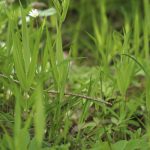Are you guilty of these evil deeds dwellers do that provoke the old-school chills and thrills of those B-movie horror flicks? Read on to learn the chilling truth about gardening mayhem most foul.
I love classic horror flicks with their spooky music and clueless characters opening suspicious doors or stepping down into a dank, dark basement — even when the entire audience is screaming, “No, don’t do it!”
Quite eerily, I find myself exclaiming the very same thing when I witness some of the scary things people do in their landscapes.
Here’s just a few evil deeds dwellers do in their landscapes that provoke the old-school chills and thrills of those B-horror movies.
Crape murder!
The annual topping of crape myrtles is just tragic and a classic horror movie example of human foolishness. Topping shortens tree life, encourages pest problems and discourages flowering. Please, stop the madness!
Watering grass throughout fall and winter.
Doing this more than once a month inevitably leads to pockets of brown patch or worse, take-all root rot. Turf fungi love it when people water during cool, wet months in the late evening and early morning, and nurseries love it when the same people spend lots of money on fungicides. Even scarier: ignoring the winter averaging period and significantly increasing your monthly sewer bill charge the following year.
Pruning oak trees and not painting the wounds.
I was part of the original oak wilt management team in the late 80s and I’ve seen far too many dead live oaks. Dead limbs are very scary. Don’t be foolish. Paint all fresh wounds on oaks.
Feeding plants.
I hear this on the radio all the time, “My grass or begonia is looking poorly. What should I feed it?” First, humans do not “feed” plants. Plants have been doing that for themselves for millions of years through the process of photosynthesis. Most of time if a plant is unhappy, it’s because humans have added too much water, too many chemicals, too much mulch or too much competition by planting too many other plants alongside it. We can provide essential nutrients when necessary, but unless your plant is Audrey Junior, your plants can feed themselves.
Rolling with river rock.
The use of river rock is not a xeriscape. Rocks are not included among the seven principles of xeriscape. River rocks don’t provide any environmental benefit, they increase air temperatures, encourage flooding and are a pain in the rear to maintain. I’ve even seen people keep the in-ground irrigation in a bed of river rock. Now that’s a very scary trick.
Using weather-based run times for in-ground irrigation systems.
Running your irrigation system from your phone is convenient, but it will waste a lot of water when it’s set to weather-based run schedules. That basis of programming is derived from experience in Arizona, Nevada and California. South Texas is nothing like any of those places.
I find that the hero or heroine of scary movies is usually the plain looking one with simple common sense. The same can be applied to the best landscapes: those that are mowed weekly, watered twice a month, composted twice a year and planted with native plants in locations best suited to them fare the best.
So easy and so not scary.




